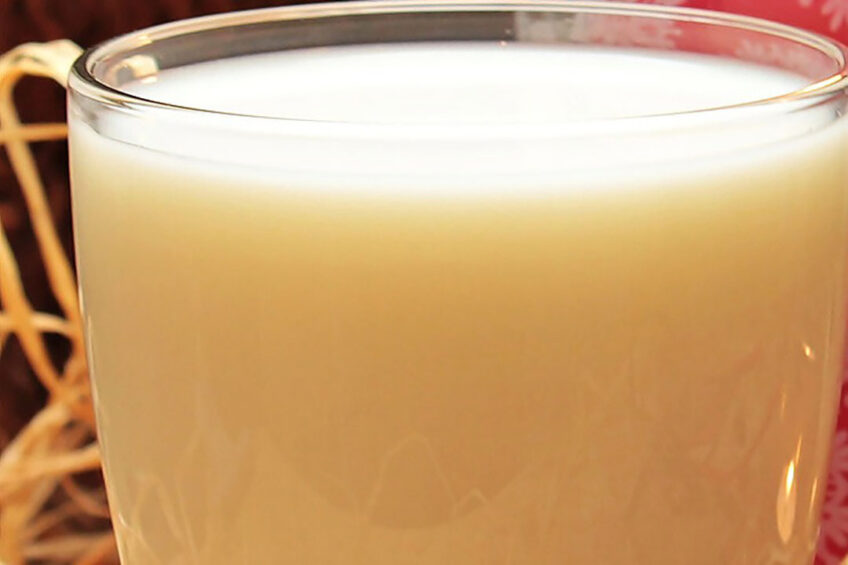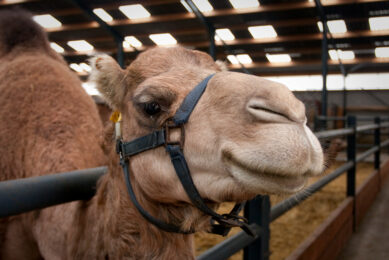The rise of camel milk

From a nutritional perspective, camel milk is richer than cow’s milk in vitamin C, vitamin B, iron, calcium, magnesium and potassium and contains higher quantities of copper. Although pricier than cow’s milk, there is a noticeable increase in its demand.
For thousands of years, countries in the Middle East and North Africa have consumed camel milk. However, over the past 2 or 3 decades, there has been an increasing interest from other parts of the world. Health-conscious consumers are said to be driving the surge.
Grand View Research reports that the global camel milk products market size was valued at US$10.2 billion in 2019. The increasing popularity of camel milk due to its easy-to-digest property among lactose-intolerant consumers is expected to have a positive impact on the industry. It also says that in terms of the health perspective, camel milk is low in fat (about 2-3%) compared to cow dairy. This is expected to attract more health-conscious consumers who keep an eye on calories. Other research suggests that, in general, camel milk is made up of water (87%), protein (3.4%), fat (3.5%), lactose (4.4%), and ash (0.79%).
Price to hamper growth
Camel milk is much more expensive compared to regular cow’s milk, as it is much more expensive to produce. As an example by Grand View Research, camel milk can sell for about US$13 per litre in Europe, whereas, cow’s milk costs around US$0.40 per litre.
Desert Farms offers US$35 per litre in the US, while cow’s milk is priced at around US$0.80 per litre. The high price of camel milk products is expected to hamper market growth in the coming years.
A recent research paper states that, although traditionally drunk in raw or naturally fermented form, camel milk has undergone unprecedented transformations, such as:
- Pasteurisation
- Directed fermentation
- Cheese or yoghurt processing
- Processing into milk powder for the export market.
- However, the specific characteristics of this milk (composition, physical properties) mean that the technologies applied (copied from technologies used for cow milk) must be adapted.
Camel milk production
World camel milk production plays an important role in countries in North and East Africa, the Middle East and parts of Asia. The FAO reports that camel milk is normally produced under low-input, low-output systems – 5 litres a day is considered a decent yield. Lactating camels generally produce between 1,000 and 2,700 litres per lactation in Africa, but camels in South Asia were reported to produce up to 12,000 litres per lactation. Camels reach the maximum yield in the second or third month of lactation and produce milk for 8-18 months.
In September, Arabian Business Insider reported that UAE companies will continue to export camel milk to European countries. This comes after the approval of the Camel Milk Residue Monitoring Plan by the European Commission.
The Ministry of Climate Change and Environment announced that approval allows for the export of UAE camel milk to the 27 EU countries during 2021. About 4,500 tonnes of camel milk and associated products are produced annually and are among the UAE’s signature foods.
Camel milk facts and figures
- Camels are kept for milk production in Africa and Asia.
- Camel milk is popular across the Middle East and Africa, with 64% of worldwide camel milk production coming from Somalia and Kenya.
- The global camel population is estimated at 35 million head.
- In sub-Saharan Africa, camels contribute about 5% of total milk production.
- In 2019, the top camel milk producers are Kenya, Somalia, Mali, Ethiopia, Saudi Arabia, Niger, Sudan, the United Arab Emirates, Chad and Maurtania.
- Major companies that produce camel milk include Camelicious, Desert Farms, The Camel Milk, Vital Camel Milk, Camel Dairy Farm Smits.
- Top camel milk consumers include countries in the Middle East, Asia and Africa.
- According to Dubai-based Camelicious, there is a growing taste for camel milk and for companies in the UAE, Asia, and in particular,
- China has become a major market. And one such company is anticipating a major sales boost.







